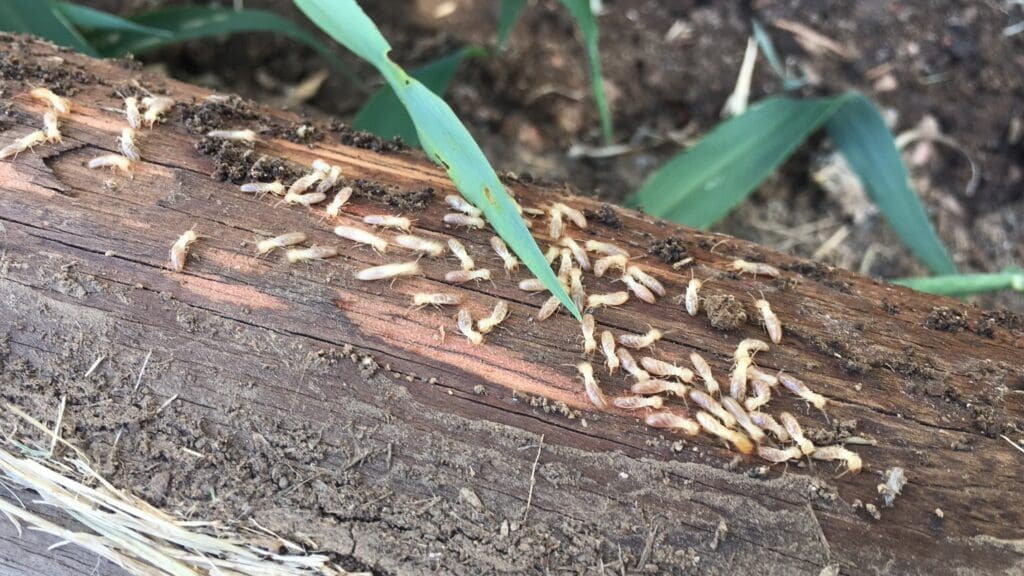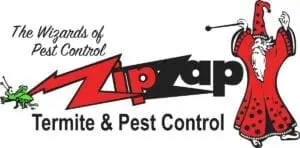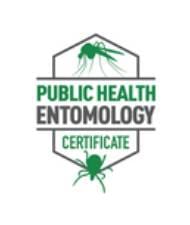TERMITES

Termite Swarmers in Kansas City: The Beginning of a New Colony
Kansas City is home to a particularly destructive type of termite: the Reticulitermes flavipes. These subterranean termites are the primary culprits behind the extensive wood damage seen in local homes. To understand their threat, it’s essential to grasp their social structure and lifecycle. Additionally, homeowners often face problems with Termites in Kansas City during the peak seasons.
Termites are highly social insects, living in complex colonies with distinct roles for each member. These roles are divided into castes:
- Worker termites are the most numerous and do the bulk of the work, including tunneling, foraging for food, and feeding the colony. Moreover, they are also responsible for the actual damage to homes as they consume wood to sustain the colony.
- Soldier termites: Larger than workers, they primarily protect the colony from intruders, such as ants or other termite colonies in Kansas City.
- Queen termite: The reproductive core of the colony, her sole purpose is to lay eggs.
- King termite: While less prominent, the king mates with the queen to ensure the colony’s genetic diversity.
- Winged termites (alates): These reproductive members are destined to leave the colony and start new ones. They are often misidentified as flying ants.
Lifecycle of a Termite
The lifecycle of a termite colony begins with a swarm. When a colony reaches maturity, typically after four to six years, winged termites emerge to mate and establish new colonies. This swarming usually occurs on warm, humid days in the spring. Once they’ve shed their wings, the mated pair creates a new colony underground, with the queen laying eggs that hatch into larvae. These larvae develop into nymphs, eventually becoming workers, soldiers, or new reproductive individuals. The annual emergence of swarming termites in Kansas City is often a crucial period requiring vigilance from homeowners.
The colony continues to grow, with the queen’s egg-laying capacity increasing dramatically as it expands. As the colony grows, so does its appetite for wood. If left unchecked, this relentless consumption can lead to significant structural damage to homes.
Understanding the termite life cycle and the role of swarmers is crucial for effective termite control. Moreover, by recognizing the signs of a termite infestation early on and taking appropriate action, homeowners can protect their property from these destructive pests. The importance of monitoring termites in Kansas City cannot be overstressed. Keeping an eye on termite activities in Kansas City is essential for protecting your home.
Rhinotermitidae: Reticulitermes flavipes
Termites in Kansas City are referred to as Rhinotermitidae: Reticulitermes flavipes and are the most common destructive termite feeder and consumer of homes in the Kansas City area that we, as pest control operators, encounter. Moreover, termites in Kansas City are social insects. Termites have different castes or groups of individuals that perform various functions in the colony—winged termites swarm from mature colonies, usually 4 to 6 years of age. The termite swarmers in Kansas City disperse and establish new colonies. Worker termites do all the damage to your home and eat the wood in your structure. The worker termites feed the others in the colony, including the Queen termite. The soldier termites are responsible for protecting the termite colony from intruders.

Jeffery Preece BCE,PHE
Jeffery is a Board Certified Entomologist at ZipZap Termite & Pest Control



